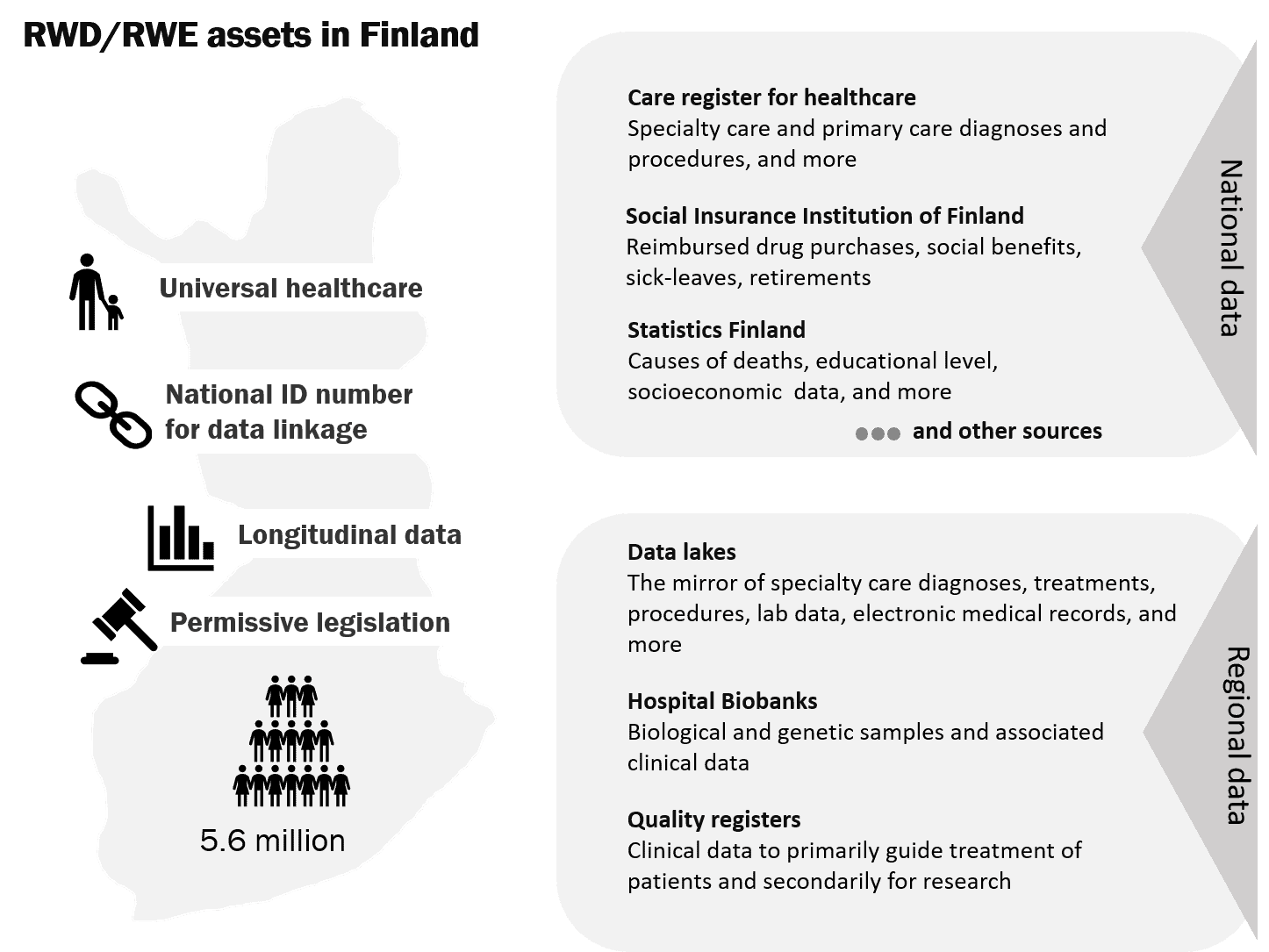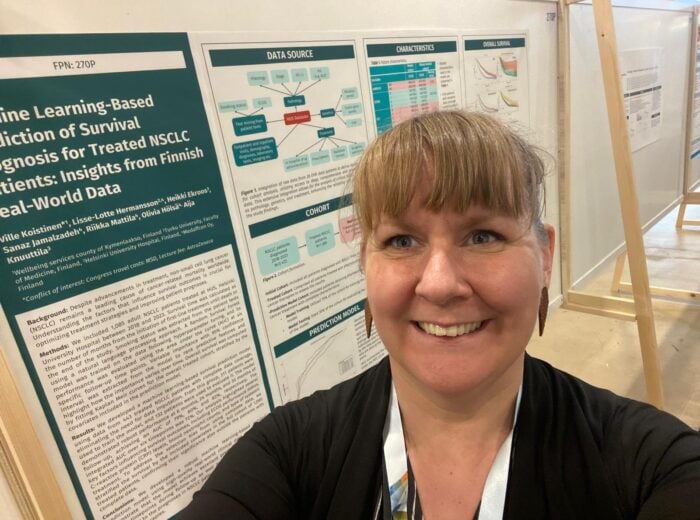Medaffcon Presented Insights from Finnish Real-World Data at European Lung Cancer Congress
Medaffcon's European Lung Cancer Congress (ELCC) poster showcased key findings from a recent study on non-small cell lung cancer (NSCLC).
The real world data (RWD) landscape in Finland offers globally unique data and possibilities to link different data sources, to gain insight on disease epidemiology, outcomes, patient journey, and healthcare resource utilization to name a few.
Finland has since the 1960’s collected longitudinal healthcare data to national patient registries including for example information on primary and secondary care diagnoses, procedures, medication purchases, causes of death and sick leave days. More recently in the 2000’s, significant investments have been put into the creation of data lakes collecting real time patient data and acting as mirrors to specialty care.
The Finnish government has also taken profound actions to enact several local laws to facilitate the use of the above-mentioned high-quality health and social welfare sector data resources for research and development purposes.
All these different data sources can be linked using a unique personal identification number, to gain a holistic view of the status of current care. As the offered healthcare is universal to all Finns, data is also representative of the whole population.
“Finland has for a several years systematically invested in the national registers and the possibilities of utilizing the information collected in hospital data sources. To exploit the full potential of these valuable data sources we need a good partner for the entire life cycle of RWE projects to help, especially in laborious and time-consuming phases or in cases, where there is not sufficiently internal resources available for the project.”
Heikki Kurkela, Head of Market Access and External Affairs, Oncology, Novartis Finland.

Out of the high-quality and versatile Finnish data sources, data lakes have proven their global uniqueness through the depth of information in the electronic medical records e.g. hospital medication, imaging and pathology results, laboratory values, diagnoses and procedures, especially when combined with other data sources. Following patients through the disease course and studying different aspects of the process is an approach often used in the RWD studies.
“We appreciate especially the partner’s up-to-date overall picture of the Finnish RWE opportunities, as well as extensive expertise of the changes in our industry. Medaffcon’s data analytics and broad-based scientific expertise gives us strong support for various types of RWE projects. Medaffcon’s staff is competent, well-versed and react to things promptly and proactively. We also appreciate that they are able to recommend fresh perspectives and challenge our suggestions.”
Heikki Kurkela, Head of Market Access and External Affairs, Oncology, Novartis Finland.

Medaffcon is a pioneer in RWE research efforts sponsored by the private sector. Our RWE process is well-established and effective, and contains services throughout the process, i.e. from the initial study design to scientific publication. For more information contact: info@medaffcon.com or RWE Lead mariann.lassenius@medaffcon.com
Finnish ecosystem supports the use of real world evidence (RWE)
Finnish hospital biobanks promote research both nationally and internationally
Possibilities of machine learning and artificial intelligence in RWE studies
Real world evidence (RWE) supported health technology assessment (HTA)

Medaffcon's European Lung Cancer Congress (ELCC) poster showcased key findings from a recent study on non-small cell lung cancer (NSCLC).

Johan Rehnberg started working as a Scientific Advisor at Medaffcon’s Swedish office in August 2024. He is a dynamic researcher who values opportunities to learn new things and develop his skills – opportunities that Medaffcon provides.

The algorithm was originally developed to extract smoking status from patient texts with purpose to analyze the effects of smoking on postoperative complications. Today, it is also being utilized in lung cancer research.